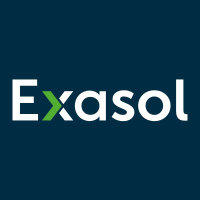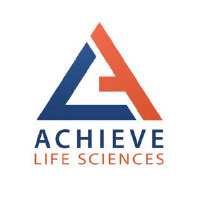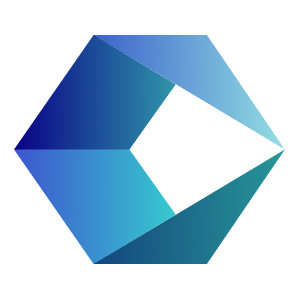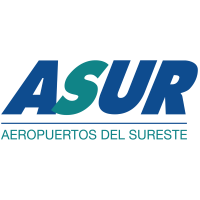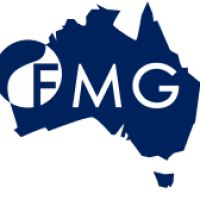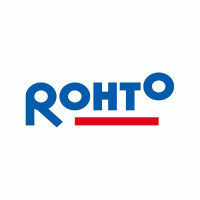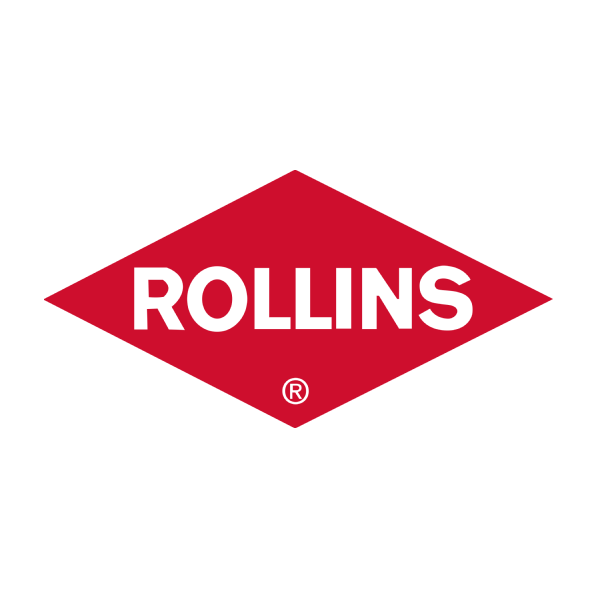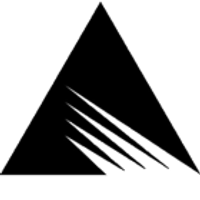
Lam Research Corp
NASDAQ:LRCX
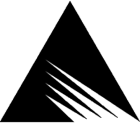

| US |

|
Johnson & Johnson
NYSE:JNJ
|
Pharmaceuticals
|
| US |

|
Berkshire Hathaway Inc
NYSE:BRK.A
|
Financial Services
|
| US |

|
Bank of America Corp
NYSE:BAC
|
Banking
|
| US |

|
Mastercard Inc
NYSE:MA
|
Technology
|
| US |

|
UnitedHealth Group Inc
NYSE:UNH
|
Health Care
|
| US |

|
Exxon Mobil Corp
NYSE:XOM
|
Energy
|
| US |

|
Pfizer Inc
NYSE:PFE
|
Pharmaceuticals
|
| US |

|
Palantir Technologies Inc
NYSE:PLTR
|
Technology
|
| US |

|
Nike Inc
NYSE:NKE
|
Textiles, Apparel & Luxury Goods
|
| US |

|
Visa Inc
NYSE:V
|
Technology
|
| CN |

|
Alibaba Group Holding Ltd
NYSE:BABA
|
Retail
|
| US |

|
JPMorgan Chase & Co
NYSE:JPM
|
Banking
|
| US |

|
Coca-Cola Co
NYSE:KO
|
Beverages
|
| US |

|
Walmart Inc
NYSE:WMT
|
Retail
|
| US |

|
Verizon Communications Inc
NYSE:VZ
|
Telecommunication
|
| US |

|
Chevron Corp
NYSE:CVX
|
Energy
|
Utilize notes to systematically review your investment decisions. By reflecting on past outcomes, you can discern effective strategies and identify those that underperformed. This continuous feedback loop enables you to adapt and refine your approach, optimizing for future success.
Each note serves as a learning point, offering insights into your decision-making processes. Over time, you'll accumulate a personalized database of knowledge, enhancing your ability to make informed decisions quickly and effectively.
With a comprehensive record of your investment history at your fingertips, you can compare current opportunities against past experiences. This not only bolsters your confidence but also ensures that each decision is grounded in a well-documented rationale.
Do you really want to delete this note?
This action cannot be undone.

| 52 Week Range |
59.09
166.37
|
| Price Target |
|
We'll email you a reminder when the closing price reaches USD.
Choose the stock you wish to monitor with a price alert.

|
Johnson & Johnson
NYSE:JNJ
|
US |

|
Berkshire Hathaway Inc
NYSE:BRK.A
|
US |

|
Bank of America Corp
NYSE:BAC
|
US |

|
Mastercard Inc
NYSE:MA
|
US |

|
UnitedHealth Group Inc
NYSE:UNH
|
US |

|
Exxon Mobil Corp
NYSE:XOM
|
US |

|
Pfizer Inc
NYSE:PFE
|
US |

|
Palantir Technologies Inc
NYSE:PLTR
|
US |

|
Nike Inc
NYSE:NKE
|
US |

|
Visa Inc
NYSE:V
|
US |

|
Alibaba Group Holding Ltd
NYSE:BABA
|
CN |

|
JPMorgan Chase & Co
NYSE:JPM
|
US |

|
Coca-Cola Co
NYSE:KO
|
US |

|
Walmart Inc
NYSE:WMT
|
US |

|
Verizon Communications Inc
NYSE:VZ
|
US |

|
Chevron Corp
NYSE:CVX
|
US |
This alert will be permanently deleted.
Lam Research Corp
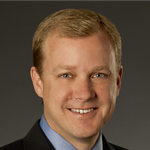
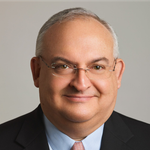

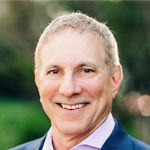

In the ever-evolving landscape of semiconductor manufacturing, Lam Research Corp. stands as a pivotal orchestrator of technology and innovation. Founded in 1980, this American company has skillfully navigated the complex world of wafer fabrication equipment, establishing itself as a cornerstone in the semiconductor supply chain. At the heart of Lam Research's operations, and indeed its success, lies the development of advanced equipment and services that enable chipmakers to produce increasingly smaller and more powerful semiconductors. This involves intricate processes such as etching and deposition, which are essential in the creation of the complex circuits present in nearly every digital device. By facilitating these critical steps, Lam Research not only aids in the production of the semiconductors themselves but also plays a significant role in propelling technological advancement across industries, from consumer electronics to automotive.
Crucially, the way Lam Research Corp. generates revenue is intrinsically linked to its position in this supply chain. The company provides equipment and services that are indispensable to semiconductor fabrication, creating a steady stream of income from sales, maintenance, and upgrades. A significant part of its business model is based on long-term relationships with leading chip manufacturers who rely on Lam’s cutting-edge technology to stay competitive. As a result, Lam enjoys a blend of initial capital equipment sales and recurring service and parts revenue. This hybrid model not only ensures continuous cash flow but also aligns Lam’s growth strategy with the ongoing evolution and innovation cycles of the semiconductor industry. In essence, by embedding itself so deeply into the fabric of semiconductor production, Lam Research has woven a business narrative that is both dynamic and resilient.

In the ever-evolving landscape of semiconductor manufacturing, Lam Research Corp. stands as a pivotal orchestrator of technology and innovation. Founded in 1980, this American company has skillfully navigated the complex world of wafer fabrication equipment, establishing itself as a cornerstone in the semiconductor supply chain. At the heart of Lam Research's operations, and indeed its success, lies the development of advanced equipment and services that enable chipmakers to produce increasingly smaller and more powerful semiconductors. This involves intricate processes such as etching and deposition, which are essential in the creation of the complex circuits present in nearly every digital device. By facilitating these critical steps, Lam Research not only aids in the production of the semiconductors themselves but also plays a significant role in propelling technological advancement across industries, from consumer electronics to automotive.
Crucially, the way Lam Research Corp. generates revenue is intrinsically linked to its position in this supply chain. The company provides equipment and services that are indispensable to semiconductor fabrication, creating a steady stream of income from sales, maintenance, and upgrades. A significant part of its business model is based on long-term relationships with leading chip manufacturers who rely on Lam’s cutting-edge technology to stay competitive. As a result, Lam enjoys a blend of initial capital equipment sales and recurring service and parts revenue. This hybrid model not only ensures continuous cash flow but also aligns Lam’s growth strategy with the ongoing evolution and innovation cycles of the semiconductor industry. In essence, by embedding itself so deeply into the fabric of semiconductor production, Lam Research has woven a business narrative that is both dynamic and resilient.
Record Revenue: Lam delivered record September quarter revenue of $5.3 billion, up 3% from the June quarter and above guidance midpoint.
Profitability Highs: Gross margin hit a record 50.6%, and operating margin reached a record 35%, both at the top of guided ranges.
Strong Services: Combined spares and services revenue reached a record, with upgrades and support outpacing installed base growth.
Outlook: December quarter revenue is guided to $5.2 billion (±$300 million), with gross margin expected to decline to 48.5% due to tariffs and customer mix.
China Impact: New export restrictions are expected to lower China to less than 30% of 2026 revenue, creating a ~$600 million annual revenue headwind.
WFE Growth: Global wafer fab equipment (WFE) spending in 2025 is trending above the prior view of $105 billion, with 2026 expected as a growth year, especially in the second half.
AI & Memory Demand: Accelerating AI-related investments and higher NAND bit demand are driving near-term and future equipment needs.
Capital Return: Lam repurchased $990 million in shares and paid $292 million in dividends in the quarter.
Management

Timothy M. Archer is a well-regarded business executive in the semiconductor industry, known for his significant contributions to Lam Research Corporation. He serves as the President and Chief Executive Officer (CEO) of Lam Research, a leading supplier of wafer fabrication equipment and services to the global semiconductor industry. Archer joined Lam Research in 2012 as the Executive Vice President and Chief Operating Officer. In this role, he was responsible for the oversight of the company's product groups, engineering, global operations, and other key functions. His leadership was instrumental in driving operational efficiency and innovation within the company. In January 2019, Archer was appointed as CEO, succeeding Martin Anstice. Under his leadership, Lam Research has continued to thrive in the competitive semiconductor equipment market, focusing on addressing the evolving needs of semiconductor manufacturers and capitalizing on technological advancements. Before joining Lam Research, Archer held various leadership positions at Novellus Systems, another semiconductor equipment company, including Chief Operating Officer. His extensive experience in the industry spans various aspects of operations and technology, making him a pivotal figure in shaping the strategies of the companies he has led. Archer holds a Bachelor of Science degree in Applied Mechanics from the University of California, San Diego, and a Master of Science degree in Mechanical Engineering from Stanford University. His academic background and industry experience have contributed to his reputation as a knowledgeable and forward-thinking leader in the semiconductor sector.

Archer joined Lam Research in 2012 as the Executive Vice President and Chief Operating Officer. In this role, he was responsible for the oversight of the company's product groups, engineering, global operations, and other key functions. His leadership was instrumental in driving operational efficiency and innovation within the company.
In January 2019, Archer was appointed as CEO, succeeding Martin Anstice. Under his leadership, Lam Research has continued to thrive in the competitive semiconductor equipment market, focusing on addressing the evolving needs of semiconductor manufacturers and capitalizing on technological advancements.
Before joining Lam Research, Archer held various leadership positions at Novellus Systems, another semiconductor equipment company, including Chief Operating Officer. His extensive experience in the industry spans various aspects of operations and technology, making him a pivotal figure in shaping the strategies of the companies he has led.
Archer holds a Bachelor of Science degree in Applied Mechanics from the University of California, San Diego, and a Master of Science degree in Mechanical Engineering from Stanford University. His academic background and industry experience have contributed to his reputation as a knowledgeable and forward-thinking leader in the semiconductor sector.

Dr. Patrick J. Lord Ph.D. serves as an executive at Lam Research Corporation, a leading supplier of wafer fabrication equipment and services to the global semiconductor industry. With extensive experience in engineering and technology leadership, Dr. Lord plays a crucial role in advancing the company's research and development initiatives. Dr. Lord holds a Ph.D. and has an accomplished background in engineering and semiconductor technology. In his role at Lam Research, he is responsible for driving innovation and overseeing the development of cutting-edge technologies that align with the evolving needs of the semiconductor manufacturing sector. His contributions have been instrumental in ensuring that Lam Research remains at the forefront of innovation, enabling semiconductor manufacturers to enhance their production capabilities and meet the demands for more advanced and efficient semiconductor devices. Dr. Lord's leadership and expertise continue to be vital to Lam Research's success in the highly competitive semiconductor industry.

Dr. Lord holds a Ph.D. and has an accomplished background in engineering and semiconductor technology. In his role at Lam Research, he is responsible for driving innovation and overseeing the development of cutting-edge technologies that align with the evolving needs of the semiconductor manufacturing sector.
His contributions have been instrumental in ensuring that Lam Research remains at the forefront of innovation, enabling semiconductor manufacturers to enhance their production capabilities and meet the demands for more advanced and efficient semiconductor devices. Dr. Lord's leadership and expertise continue to be vital to Lam Research's success in the highly competitive semiconductor industry.

Seshasayee Varadarajan is known for his role at Lam Research Corporation, where he has made significant contributions through his engineering and leadership expertise. Varadarajan has served in various executive positions, helping to drive technological innovations within the company, which is known for its work in semiconductor processing equipment. His background includes extensive experience in the semiconductor industry, with a focus on technology development and operational efficiency. At Lam Research, Varadarajan has played a pivotal role in advancing the company's product strategies and aligning them with market needs. His work has contributed to Lam Research's reputation as a leader in delivering cutting-edge solutions to its customers. With a strong foundation in engineering and a keen understanding of industry dynamics, Varadarajan's leadership has been instrumental in pushing forward Lam Research's initiatives in research and development, ultimately contributing to the broader innovation landscape in semiconductor manufacturing.

His background includes extensive experience in the semiconductor industry, with a focus on technology development and operational efficiency. At Lam Research, Varadarajan has played a pivotal role in advancing the company's product strategies and aligning them with market needs. His work has contributed to Lam Research's reputation as a leader in delivering cutting-edge solutions to its customers.
With a strong foundation in engineering and a keen understanding of industry dynamics, Varadarajan's leadership has been instrumental in pushing forward Lam Research's initiatives in research and development, ultimately contributing to the broader innovation landscape in semiconductor manufacturing.
Ms. Christina C. Correia is a distinguished executive known for her role at Lam Research Corporation, a leading supplier of wafer fabrication equipment and services to the semiconductor industry. As a strategic leader, she serves as the Senior Vice President and Chief Accounting Officer at Lam Research. Within this role, she oversees the global accounting functions, including regulatory compliance, financial reporting, and internal controls. Her adept leadership contributes significantly to maintaining transparency and accuracy in Lam Research's financial operations. Christina C. Correia has an extensive background in finance and accounting, holding various leadership positions that have honed her expertise in guiding financial strategy and operations in highly technical environments. Her contributions are pivotal in supporting Lam Research's mission of driving innovation and operational excellence. Known for her analytical skills and commitment to fostering a culture of integrity, Christina is a key figure in steering the company's financial health and compliance.
Christina C. Correia has an extensive background in finance and accounting, holding various leadership positions that have honed her expertise in guiding financial strategy and operations in highly technical environments. Her contributions are pivotal in supporting Lam Research's mission of driving innovation and operational excellence. Known for her analytical skills and commitment to fostering a culture of integrity, Christina is a key figure in steering the company's financial health and compliance.
Ava A. Harter J.D. serves as the Senior Vice President, Chief Legal Officer, and Corporate Secretary at Lam Research Corporation. In her role, she oversees the company's legal and governance functions. Harter has an extensive background in legal affairs, having accumulated years of experience in senior leadership positions across various industries. Before joining Lam Research, she was the General Counsel and Chief Compliance Officer at Owens Corning. Her career includes substantial experience in corporate law, compliance, and governance, contributing significantly to Lam Research's legal and regulatory strategies. Ava A. Harter holds a Juris Doctor degree, which underscores her expertise and dedication to her field.
Steve Fine is the Chief Financial Officer (CFO) and Senior Vice President of Lam Research Corporation. Fine joined Lam Research, a leading supplier of wafer fabrication equipment and services to the global semiconductor industry, bringing with him extensive experience in financial management and leadership within the technology sector. Before joining Lam Research, Fine had a notable career at Applied Materials, where he held several key executive positions, including corporate vice president of finance and corporate controller. His deep understanding of the semiconductor industry and strong financial acumen have contributed significantly to the operational and financial success of Lam Research. He was instrumental in driving the company’s financial strategy, overseeing financial planning and analysis, and ensuring effective financial controls and corporate governance. Fine is recognized for his strategic thinking and his ability to align financial objectives with broader business goals, which has been vital in supporting Lam Research’s innovation and growth in a highly competitive industry.
Before joining Lam Research, Fine had a notable career at Applied Materials, where he held several key executive positions, including corporate vice president of finance and corporate controller. His deep understanding of the semiconductor industry and strong financial acumen have contributed significantly to the operational and financial success of Lam Research. He was instrumental in driving the company’s financial strategy, overseeing financial planning and analysis, and ensuring effective financial controls and corporate governance.
Fine is recognized for his strategic thinking and his ability to align financial objectives with broader business goals, which has been vital in supporting Lam Research’s innovation and growth in a highly competitive industry.
Mary Teresa Hassett is a prominent figure at Lam Research Corp, where she plays a key role in the company's corporate strategy and operational execution. Known for her leadership and expertise, Hassett contributes significantly to Lam Research's success in the semiconductor industry. Her career has been marked by a focus on innovation, efficiency, and strategic growth, emphasizing the development and implementation of technologies critical to semiconductor manufacturing. At Lam Research, she is recognized for her ability to lead cross-functional teams, drive organizational change, and foster a culture of continuous improvement, which aligns with the company's goals and objectives in the competitive technology sector.

Dr. Richard A. Gottscho is a prominent figure in the semiconductor industry, best known for his role at Lam Research Corporation. With a Ph.D. in physical chemistry from the Massachusetts Institute of Technology (MIT), Dr. Gottscho has extensive experience and expertise in the field of plasma processing and semiconductor manufacturing. At Lam Research, he has served as the Executive Vice President and Chief Technology Officer, where he has been responsible for overseeing the company's global research, development, and engineering activities. His leadership has been pivotal in advancing Lam's technology portfolio, particularly in areas such as plasma etching, deposition processes, and innovative solutions for chip manufacturing. Dr. Gottscho is well-regarded for his contributions to the development of innovative technologies that have significantly impacted semiconductor manufacturing. His work has earned him several awards and recognitions, including election to the National Academy of Engineering, which highlights his influence and leadership in the engineering and technology sectors. Before joining Lam Research, he held various research and managerial roles in other esteemed organizations, where he further honed his skills and contributed to numerous advancements in semiconductor technology. His career is distinguished by his commitment to driving technological innovation and excellence in the semiconductor industry.

At Lam Research, he has served as the Executive Vice President and Chief Technology Officer, where he has been responsible for overseeing the company's global research, development, and engineering activities. His leadership has been pivotal in advancing Lam's technology portfolio, particularly in areas such as plasma etching, deposition processes, and innovative solutions for chip manufacturing.
Dr. Gottscho is well-regarded for his contributions to the development of innovative technologies that have significantly impacted semiconductor manufacturing. His work has earned him several awards and recognitions, including election to the National Academy of Engineering, which highlights his influence and leadership in the engineering and technology sectors.
Before joining Lam Research, he held various research and managerial roles in other esteemed organizations, where he further honed his skills and contributed to numerous advancements in semiconductor technology. His career is distinguished by his commitment to driving technological innovation and excellence in the semiconductor industry.
Audrey Charles is recognized as a seasoned executive at Lam Research Corporation, where she holds the position of Senior Vice President and Chief People Officer. In her role, she is responsible for overseeing the company's global human resources functions. This includes talent management, employee engagement, organizational development, and fostering an inclusive work culture. Audrey Charles is instrumental in aligning the company’s human capital strategy with its business objectives. Her leadership is aimed at promoting a work environment that nurtures diversity, equity, and inclusion. She brings a wealth of experience in human resources to Lam Research, leveraging her expertise to drive growth and innovation within the company.

Neil J. Fernandes is a prominent executive associated with Lam Research Corporation, where he serves as the Senior Vice President and Chief Accounting Officer. Lam Research is a leading global supplier of innovative wafer fabrication equipment and services to the semiconductor industry. In his role, Fernandes is responsible for overseeing Lam Research’s accounting functions, including financial reporting, regulatory compliance, and internal controls. He holds an educational background and professional qualifications that equip him for his leadership position. His extensive experience in accounting and finance, coupled with his leadership skills, plays a critical role in supporting Lam Research's financial integrity and strategic objectives. Fernandes is recognized for his proficiency in driving financial processes and systems that align with the company’s goals.

He holds an educational background and professional qualifications that equip him for his leadership position. His extensive experience in accounting and finance, coupled with his leadership skills, plays a critical role in supporting Lam Research's financial integrity and strategic objectives. Fernandes is recognized for his proficiency in driving financial processes and systems that align with the company’s goals.

